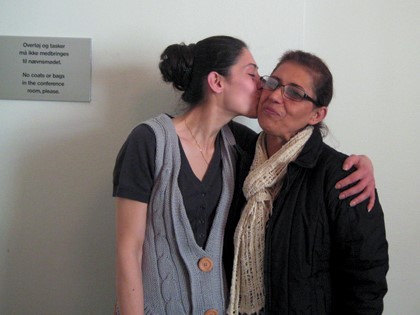How is an asylum case determined?
For more in-depth information about how asylum cases are assessed, we recommend the report "Well-founded Fear – credibility and risk assessment in Danish asylum cases" by Michala Clante Bendixen (2020). Download it here.
The Danish asylum system has two instances, first, the Danish Immigration Service and second, the Refugee Appeals Board. Asylum cases cannot be appealed to the normal court system or the Ombudsman – the Refugee Appeals Board’s ruling is the definitive ruling. This is unique in the Danish judicial system and has been criticized by many over the years. The advantage of the system, however, is it relatively expedient and flexible.
Usually, asylum seekers do not receive any kind of counseling or guidance while her/his asylum case is being considered by the Danish Immigration Service. The Danish Immigration Service rules on a case based on the information that the asylum seeker has provided in the written asylum form, compared with one or two oral interviews with help from an interpreter. Usually, an interview will last 3-6 hours, and during the interview the interviewer will transcribe a summary in Danish, which will be translated verbally by the interpreter and approved by the asylum seeker afterwards.
When the Danish Immigration Service determines that the case has been interrogated sufficiently, the service sends its ruling in Danish in a letter via mail about 3 weeks after. If the ruling is to grant asylum in Denmark then the asylum seeker will not receive an explanatory statement but the letter will include information about which municipality the asylum seeker has been assigned. If the ruling is a rejection, then the letter will include a review of the case and an explanatory statement of the ruling, and later the asylum seeker will receive the same letter but now translated into the asylum seekers’ native language. Read more about how many asylum seekers are granted asylum under What are the chances of being granted asylum? Usually, asylum seekers call it “positive” (asylum) and “negative” (rejection).
If an asylum case is processed according to Normal procedure and ruled to be a rejection, the case will automatically be appealed to the Refugee Appeals Board – but not until after a 14 days "think break" where the applicant is offered a sum of 20,000 DKR to waive the case. If not, the asylum seeker will be appointed a lawyer by his/her own choice. The lawyer will summon the asylum seeker to a meeting and prepare the case. Usually, the board meeting will take place several months after the rejection, and the asylum seeker attends in person together with her/his lawyer and an interpreter. The ruling of the case will be written down and read aloud by the interpreter immediately after the board meeting.
An Iranian woman and her daughter were granted asylum by the Refugee Appeals Board after having been rejected for 11 years.
The Refugee Appeals Board consists of 3 members: The board’s chair is a judge, the remaining members are appointed by the Ministry of Integration and the Council of the Danish Bar and Law Society. In practice, there are several boards working in tandem. The board typically makes rulings unanimously. The board’s ruling is final and cannot be appealed. An asylum seeker, whose case has been ruled on can apply to have her/his case reopened, but this will only happen if new important information has emerged after the ruling of the case – either in the form of personal circumstances, a change in the situation in the country of origin or a general change of practice in similar cases.
In 2019, only 16% of the cases were overturned by the board. There were 289 aplications to reopen cases, and 78 of them were in fact reopened, 44 sent back to forst instance again. The majority were from Iran and Afghanistan. In 2020, 20% of the cases were overturned.
Usually, the Refugee Appeals Board has a general practice for handling the different cases, particularly if there are many cases of the same type. It may happen that a ruling from an international court or committee forces Denmark to amend its practices with regard to a particular case type or a new country report changes the threat perception. At the Refugee Appeals Board’s website, you can find examples of rulings on various types of cases, which illustrates the nature of these practices. It is the board that determines the general practice, and Immigration Service must follow. The board can, however, refer a case back to the Danish Immigration Service if there is new information that needs to be considered in the first instance.
Both in first and second instance, an assessment of whether or not the asylum seeker has the right to protection according to International conventions is carried out. The risks and personal credibility of the applicant are assessed.


